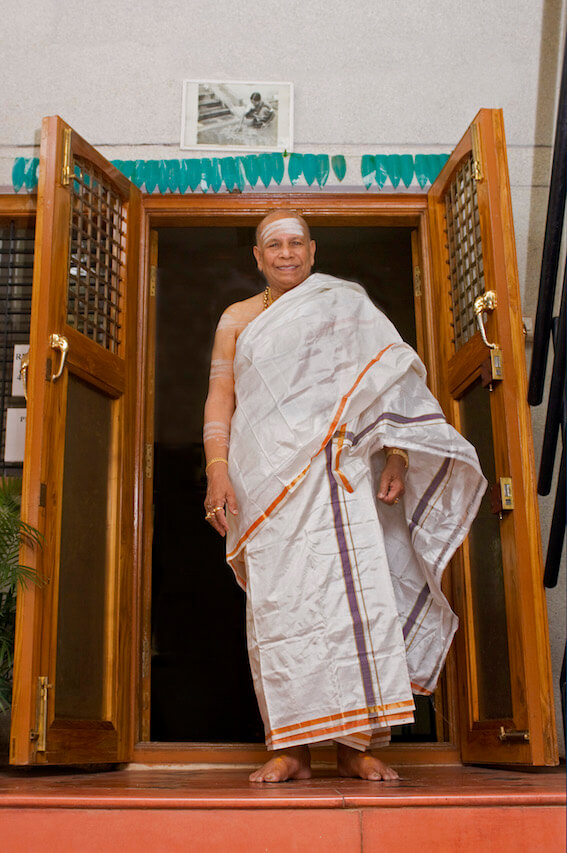Sri K. Pattabhi Jois (1915-2009) was an influential Indian yoga guru who developed and popularized Ashtanga Vinyasa yoga, a dynamic and physically demanding style of practice. As reported by various sources, Jois founded the Ashtanga Yoga Research Institute in Mysore, India in 1948, attracting thousands of students from around the world and playing a significant role in establishing modern yoga as exercise in the 20th century.
Ashtanga Vinyasa Evolution
Ashtanga Vinyasa yoga evolved from the teachings of T. Krishnamacharya, who developed dynamic sequences of postures linked with breath in the early 20th century. His student, K. Pattabhi Jois, further refined and systematized these practices into the Ashtanga method known today. Key aspects of this evolution include:
- The incorporation of vinyasa, or flowing movements between poses, which became a hallmark of the style
- The development of set sequences, including the Primary and Intermediate series, based on Krishnamacharya’s teachings and Jois’ personal observations
- The emphasis on synchronizing breath with movement, a principle that distinguishes Ashtanga from other forms of yoga
- The popularization of the Mysore-style of teaching, where students practice independently under a teacher’s guidance
While rooted in traditional yoga philosophy, Ashtanga Vinyasa has continued to evolve, adapting to modern practitioners’ needs while maintaining its core principles.
Mysore’s Yoga Legacy
Mysore, a city in southern India, became the epicenter of Ashtanga yoga’s development and dissemination under Sri K. Pattabhi Jois’s guidance. In 1948, Jois established the Ashtanga Yoga Research Institute in Mysore, which quickly became a pilgrimage site for yoga enthusiasts worldwide. The institute, later renamed the K. Pattabhi Jois Ashtanga Yoga Institute, continued to attract thousands of foreign students annually, even after Jois’s passing in 2009. Mysore’s yoga legacy is characterized by:
- The development of the “Mysore-style” teaching method, where students practice independently under a teacher’s guidance
- The preservation and transmission of Ashtanga yoga’s core principles and sequences
- The cultivation of a global Ashtanga community, with practitioners from over 30 countries
- The continued leadership of Jois’s family, including his daughter Saraswathi and grandson Sharath, who maintain the institute’s traditions
This legacy has solidified Mysore’s position as the spiritual home of Ashtanga yoga, inspiring practitioners to make the journey to study at its source and connect with the lineage.
Yoga Mala’s Philosophical Insights
Sri K. Pattabhi Jois’s seminal work “Yoga Mala” offers profound philosophical insights into Ashtanga yoga, blending traditional wisdom with practical guidance. The text emphasizes the importance of consistent practice, famously asserting that “yoga is ninety-nine percent practice and one percent theory”. Jois outlines key philosophical concepts, including:
- The ethical principles of yama and niyama, which form the foundation of yogic conduct
- The significance of vinyasa karma, the systematic method of linking breath and movement
- The integration of Patanjali’s Yoga Sutras and Hatha Yoga principles into Ashtanga practice
- The transformative potential of dedicated practice, viewing yoga as a holistic path for physical, mental, and spiritual renewal
By grounding these philosophical insights in practical application, “Yoga Mala” serves as an indispensable guide for practitioners seeking to deepen their understanding of Ashtanga yoga’s spiritual and philosophical dimensions.

